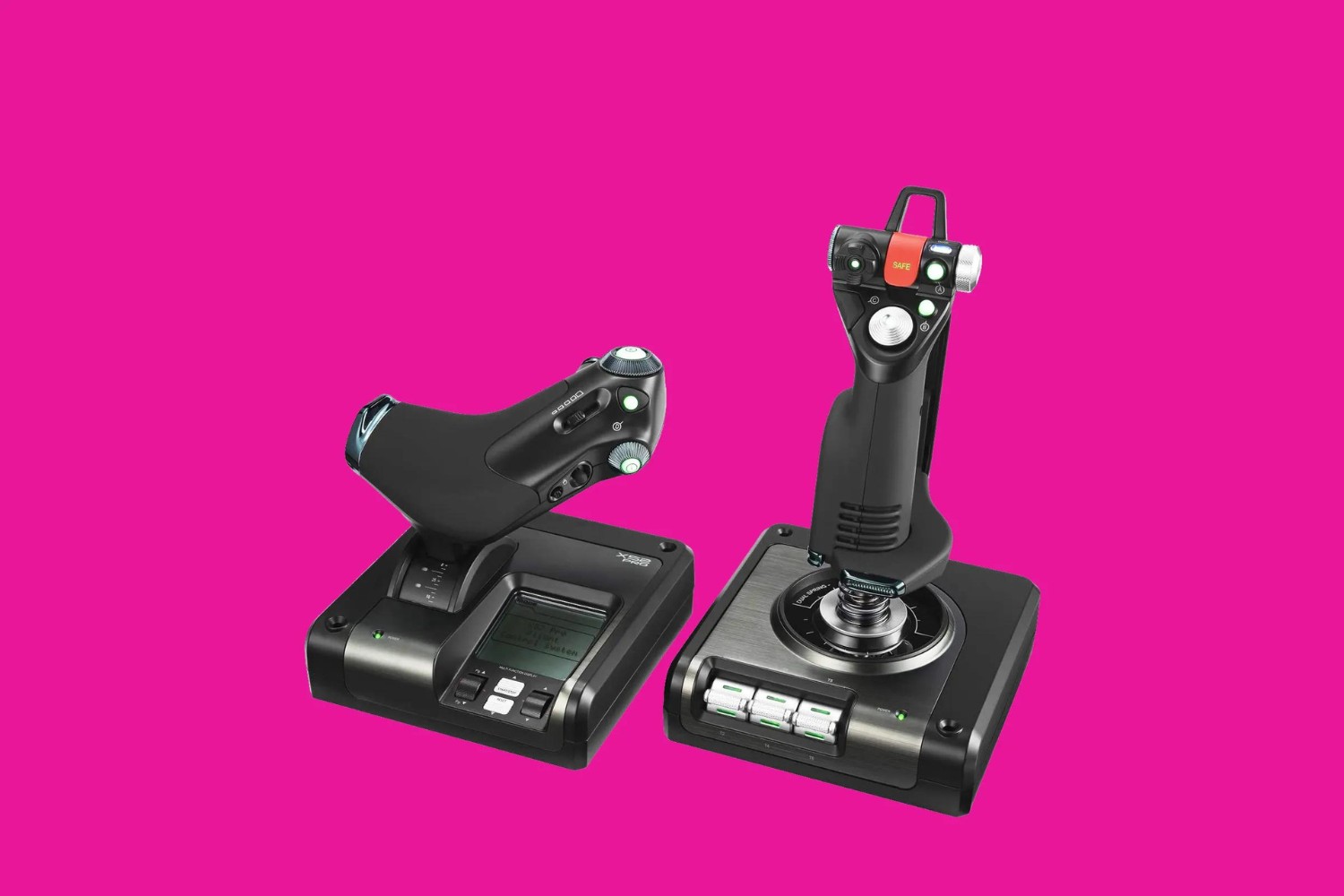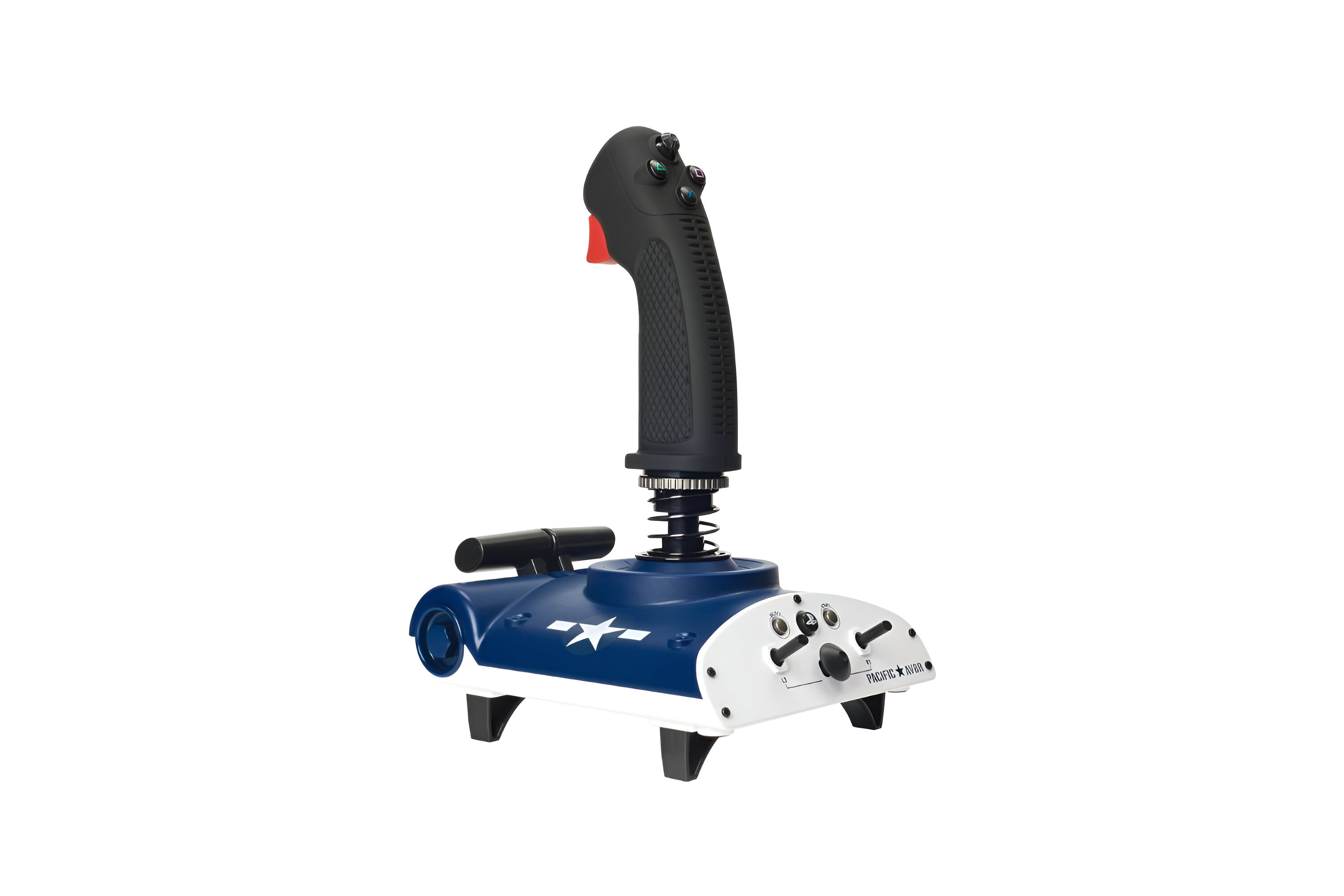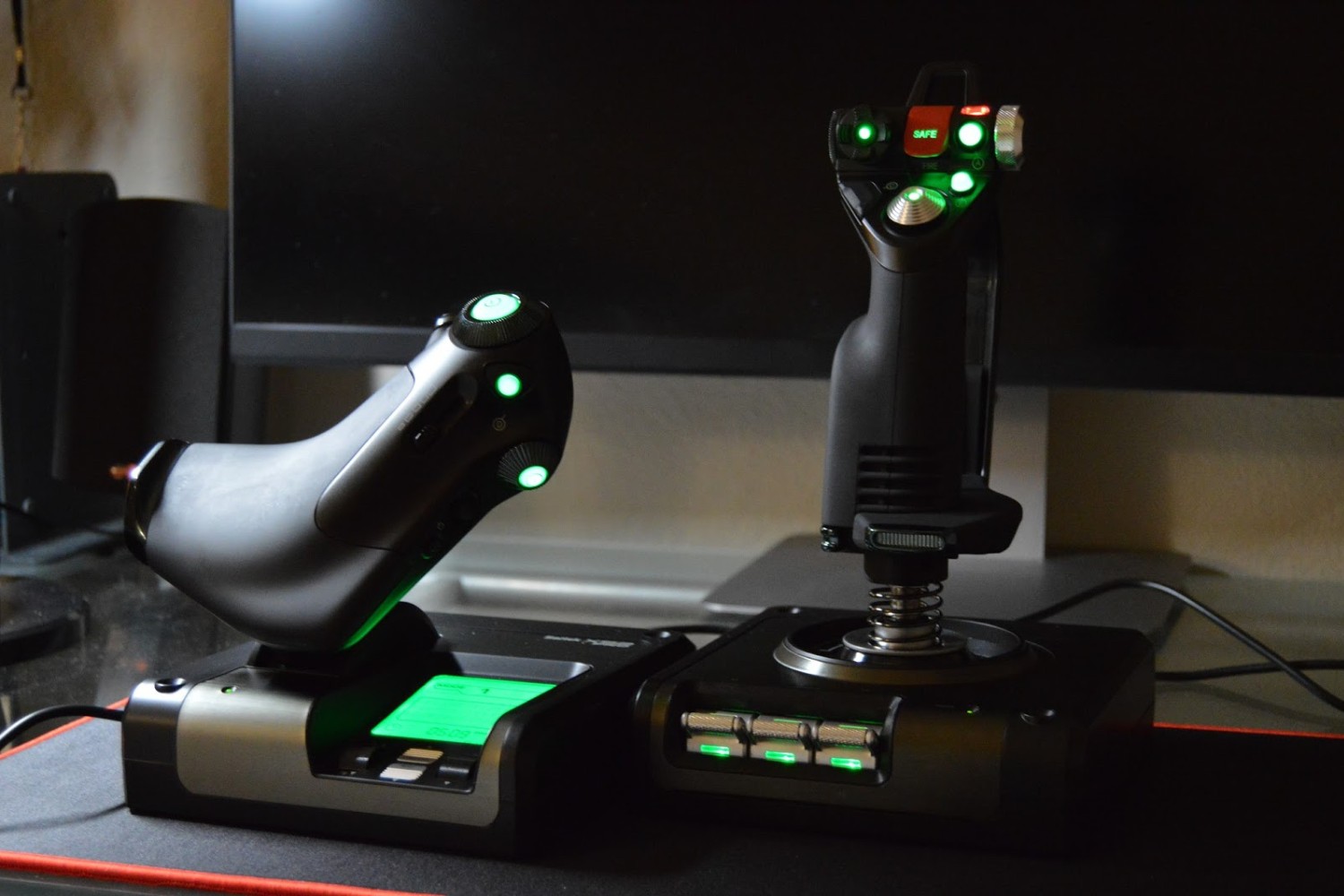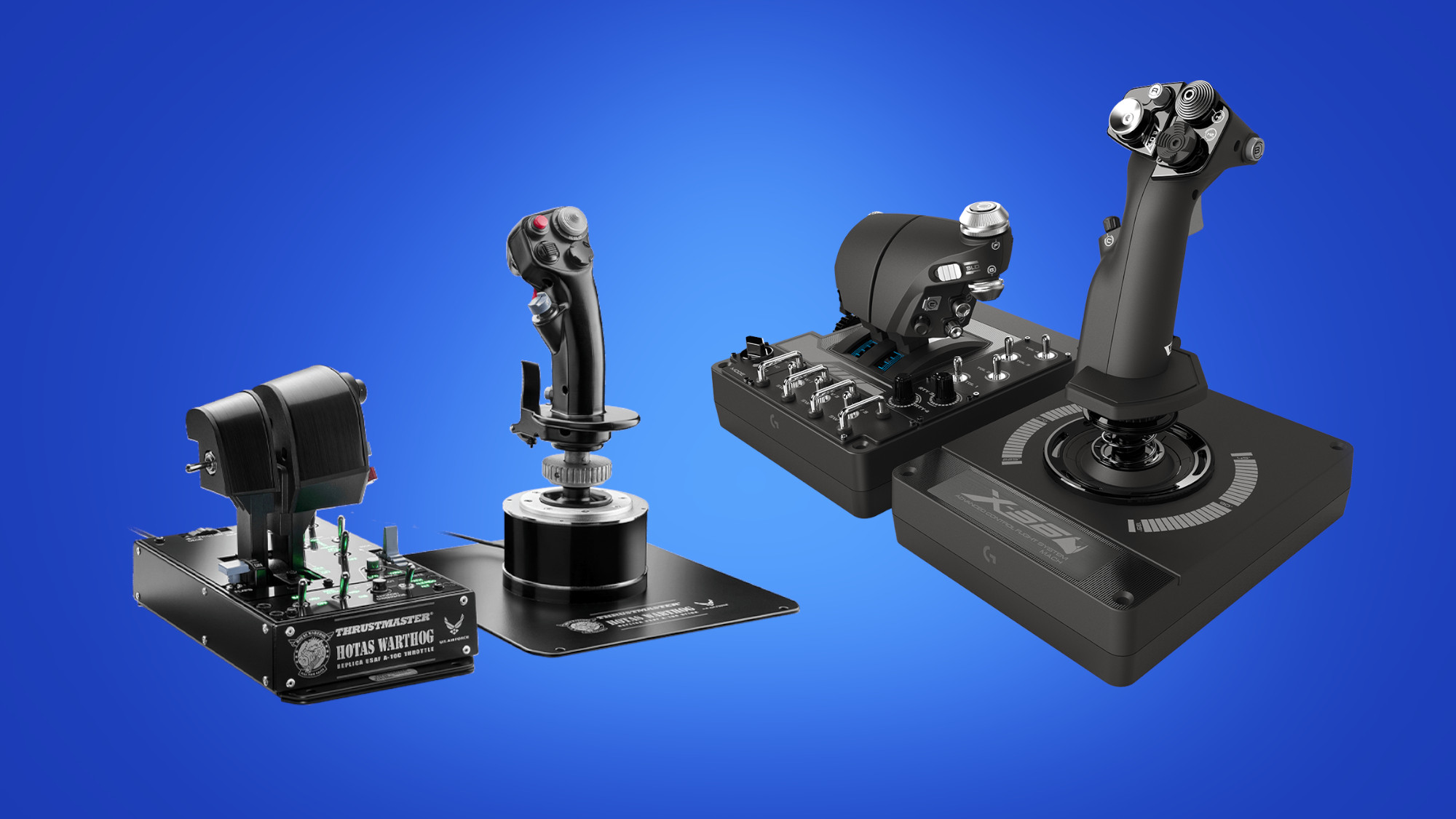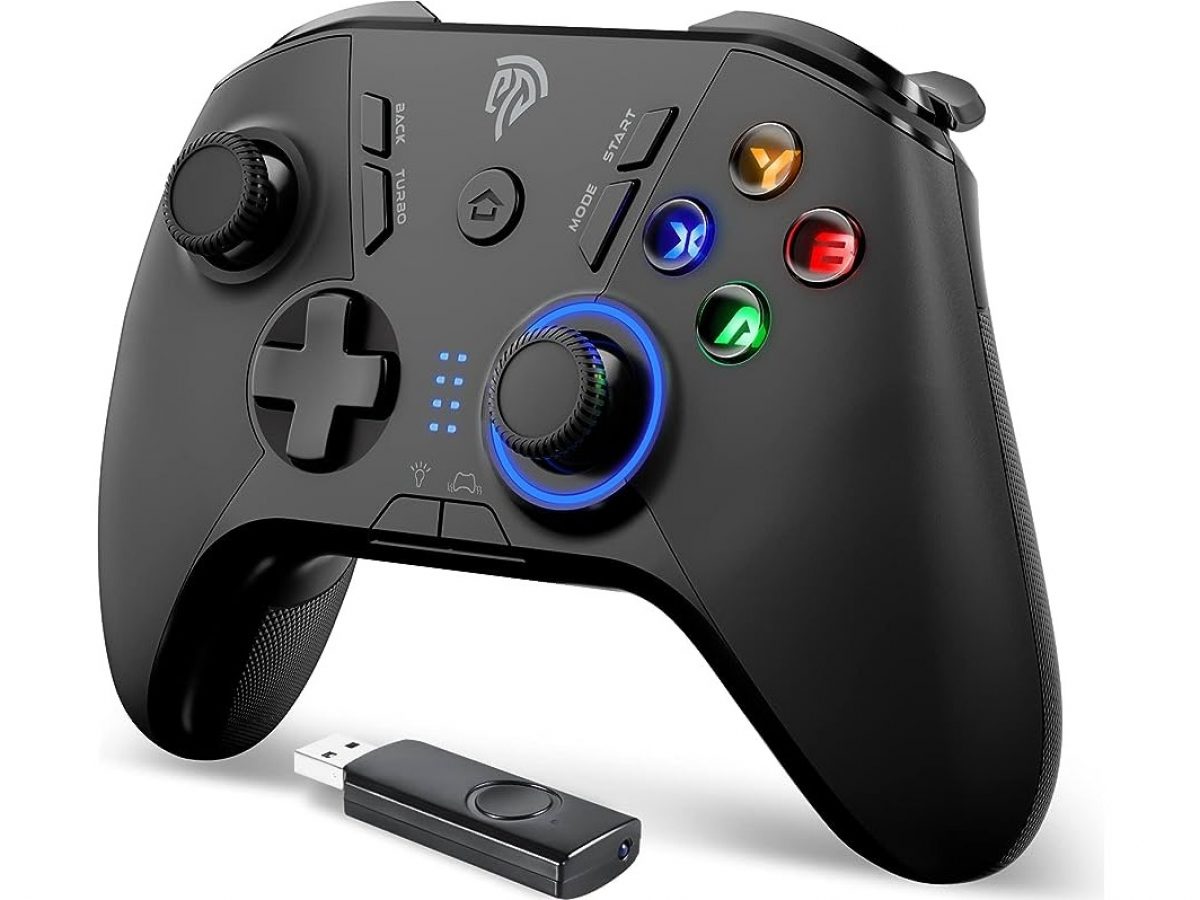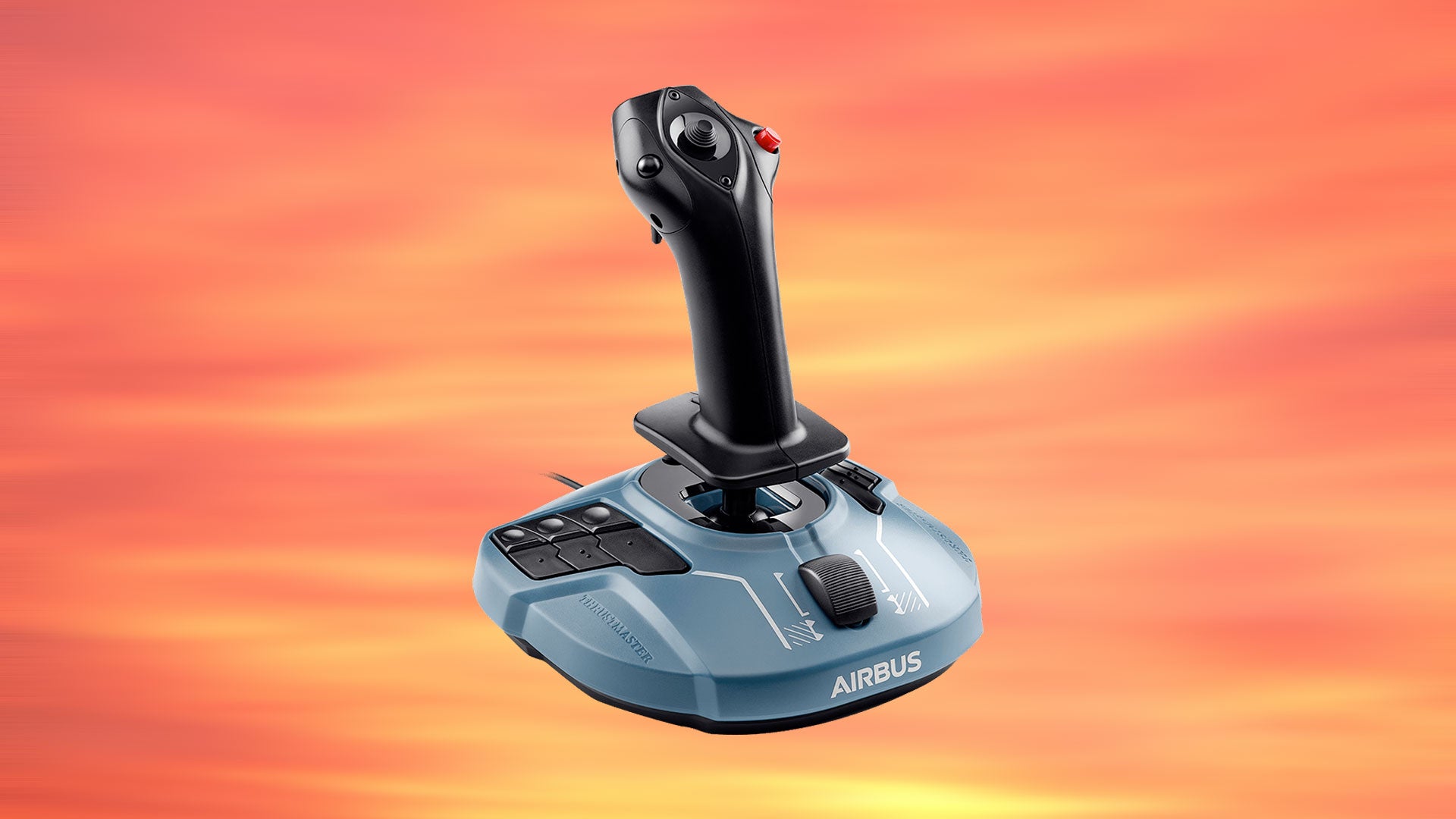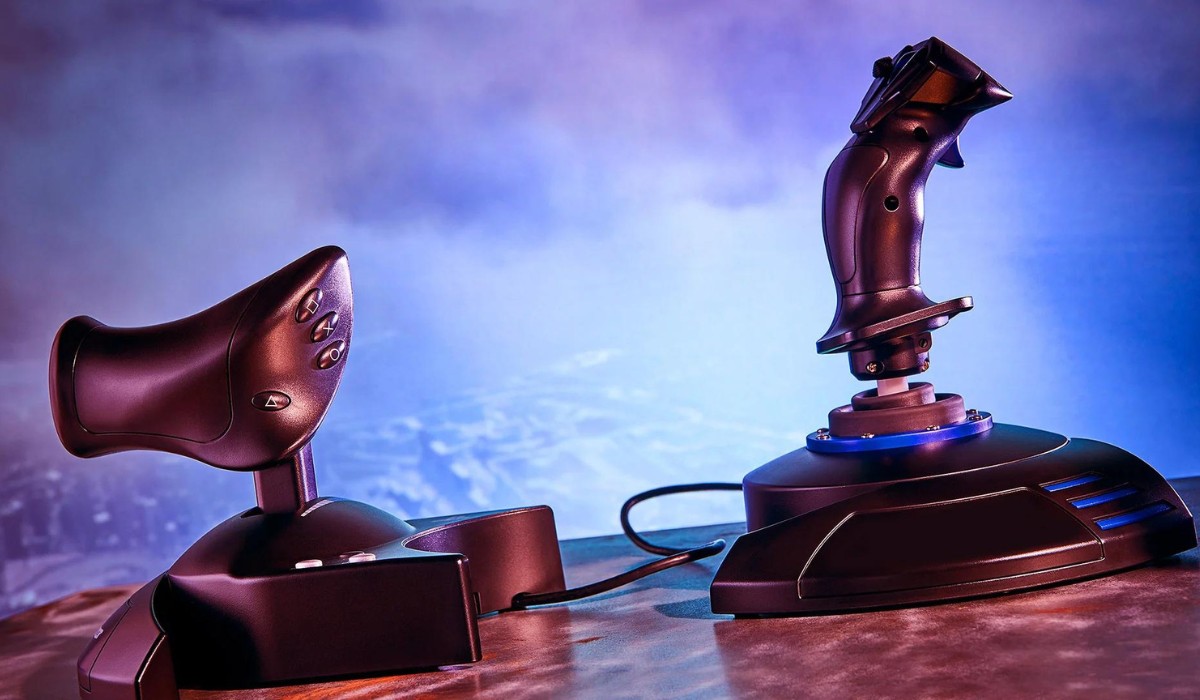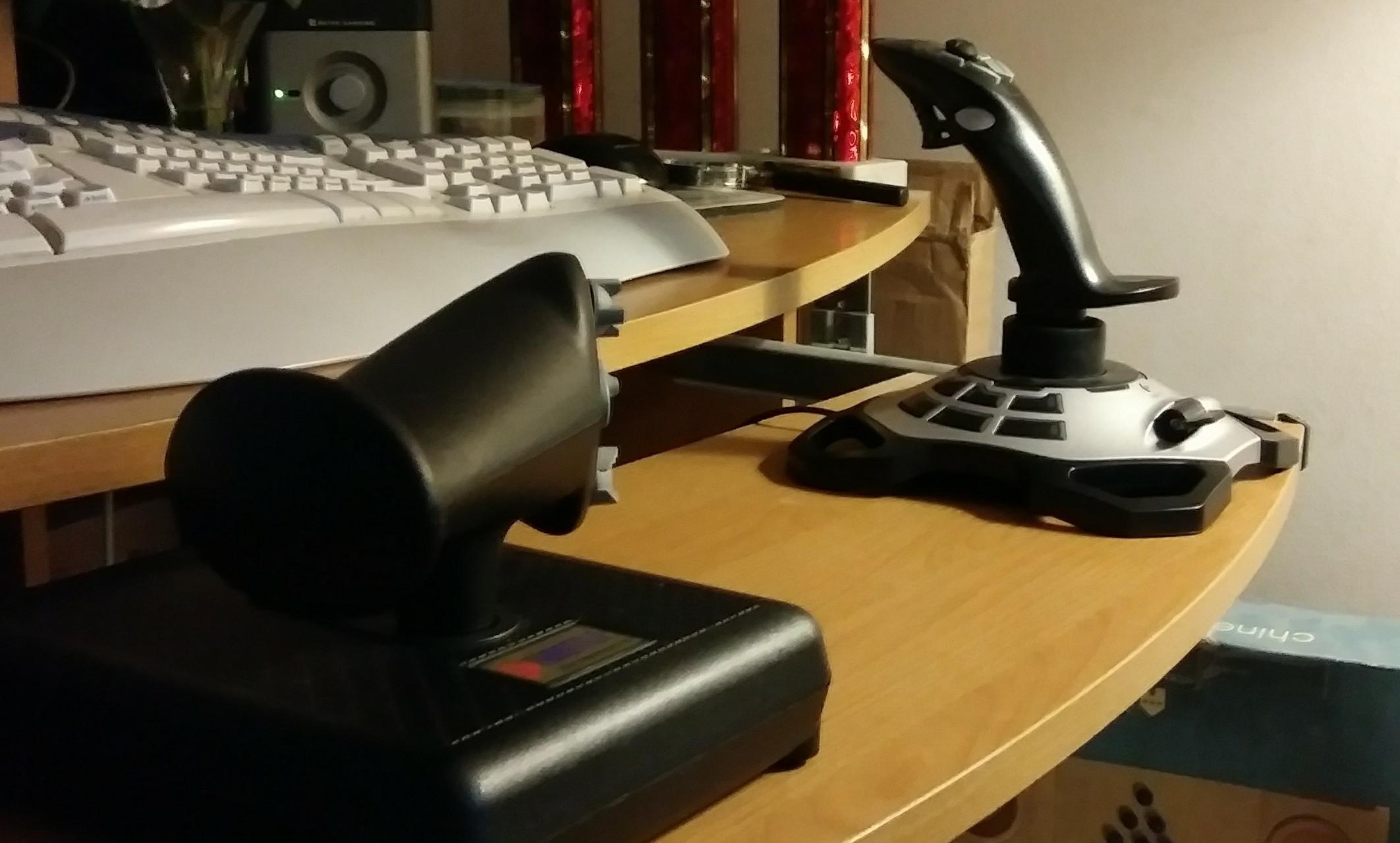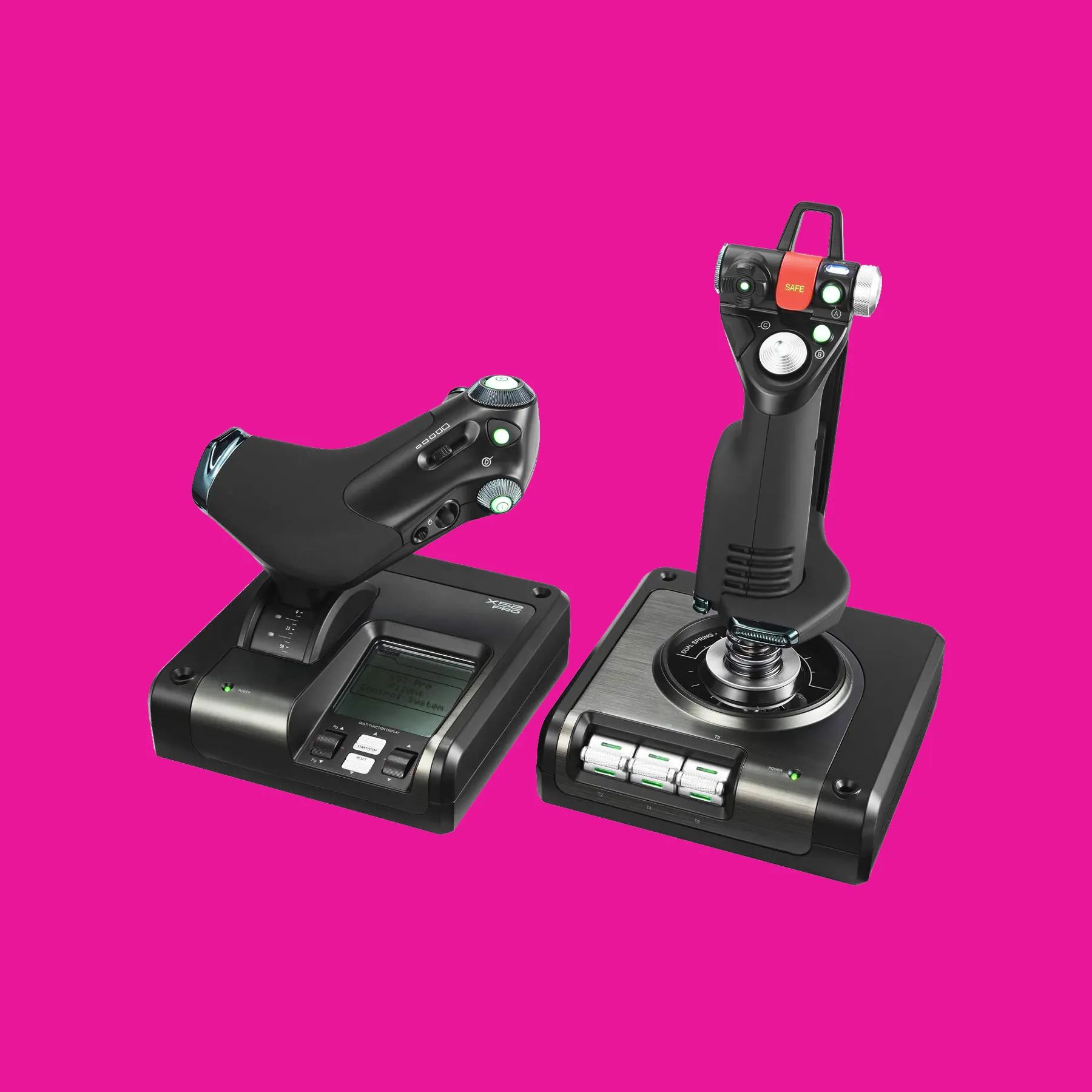Introduction
Are you ready to take your flight simulation experience to new heights with your flight stick, but finding it challenging to get it up and running on your Windows 10 system? Fret not, as this guide is tailored to help you navigate the process of locating and installing the necessary drivers for your flight stick. Whether you're a seasoned virtual aviator or a newcomer to the thrilling world of flight simulation, ensuring that your flight stick is equipped with the appropriate drivers is crucial for a smooth and immersive experience.
In the following sections, we'll explore various methods to find and install the drivers for your flight stick in Windows 10. From leveraging the convenience of plug-and-play compatibility to utilizing the powerful resources of Windows Update and the manufacturer's website, we'll walk through step-by-step instructions to ensure that your flight stick is fully operational. Additionally, we'll delve into using Device Manager to troubleshoot and update drivers, providing you with a comprehensive understanding of the process.
So, fasten your seatbelt, adjust your virtual cockpit settings, and let's embark on this journey to equip your flight stick with the essential drivers, allowing you to soar through the virtual skies with confidence and precision. Whether you're piloting a commercial airliner, executing daring aerobatics, or navigating a military aircraft, having the right drivers for your flight stick is the first step toward an exhilarating and seamless flight simulation experience. Let's ensure that your virtual flights are not grounded by driver-related issues, and instead, soar to new heights of virtual aviation mastery.
Checking for Plug-and-Play Compatibility
Before delving into the intricacies of driver installation, it’s prudent to determine whether your flight stick is equipped with plug-and-play compatibility. Plug-and-play devices are designed to be automatically recognized and configured by the operating system without the need for manual driver installation. This feature can significantly streamline the setup process, sparing you from the complexities of locating and installing specific drivers for your device.
To ascertain if your flight stick is plug-and-play compatible, simply connect it to a USB port on your Windows 10 system. Upon connecting the device, observe whether the operating system promptly detects and configures the flight stick without requiring manual intervention. If the flight stick is plug-and-play compatible, Windows 10 should seamlessly recognize and initialize the device, enabling you to use it for your flight simulation endeavors without the need for additional driver installation.
However, if the plug-and-play functionality is not triggered, or if the device is only partially recognized, it may indicate that the necessary drivers are not readily available in the system’s driver library. In such cases, it becomes imperative to explore alternative avenues for obtaining and installing the requisite drivers to ensure the full functionality of your flight stick.
While plug-and-play compatibility offers a convenient and straightforward setup process, it’s essential to note that not all flight sticks are designed with this feature. Therefore, if your flight stick does not exhibit plug-and-play behavior upon connection, don’t be disheartened. The subsequent sections will guide you through alternative methods to effectively procure and install the drivers needed to unleash the full potential of your flight stick on your Windows 10 system.
Using Windows Update to Find Drivers
Windows Update serves as a valuable resource for obtaining and installing drivers, ensuring that your devices are equipped with the latest and most compatible software. To begin the process of utilizing Windows Update to find drivers for your flight stick, navigate to the Settings app on your Windows 10 system. Within the Settings app, select “Update & Security,” where you’ll find the Windows Update option.
Upon accessing Windows Update, initiate a search for available updates by clicking on the “Check for updates” button. Windows 10 will then scan your system and connected devices for any pending updates, including drivers for your flight stick. If compatible drivers for your flight stick are identified, Windows Update will prompt you to download and install them, streamlining the process and ensuring that your flight stick is equipped with the necessary software to function optimally.
It’s important to note that Windows Update may not always have the most up-to-date drivers for specialized devices such as flight sticks. However, for many mainstream and widely-used peripherals, Windows Update can be a convenient and reliable avenue for obtaining the essential drivers. Additionally, Windows Update can serve as a supplementary method to ensure that your flight stick’s drivers are kept current after initially installing them through alternative means.
By leveraging the capabilities of Windows Update, you can harness the power of Microsoft’s extensive driver database, potentially simplifying the process of acquiring and installing the requisite drivers for your flight stick. While this method may not always yield the most specialized or niche drivers, it can serve as an accessible starting point, especially for devices with broader compatibility and widespread usage.
Visiting the Manufacturer’s Website
Another reliable and direct approach to obtaining the necessary drivers for your flight stick is to visit the official website of the manufacturer. Manufacturers often maintain comprehensive support sections on their websites, offering a repository of drivers, software updates, and documentation for their products. By accessing the manufacturer’s website, you can access the specific drivers tailored for your flight stick model, ensuring compatibility and optimal performance on your Windows 10 system.
Begin by identifying the official website of the manufacturer of your flight stick. This can typically be accomplished by referencing the product documentation, the packaging, or conducting a simple online search using the model name and manufacturer. Once on the manufacturer’s website, navigate to the support or downloads section, where you are likely to find a dedicated area for drivers and software related to your flight stick.
Within the support section, locate the drivers corresponding to your flight stick’s model and the Windows 10 operating system. Manufacturers often organize their driver downloads by product category and model, streamlining the process of identifying the correct software for your specific device. It’s crucial to ensure that you select the appropriate driver version compatible with Windows 10 to avoid compatibility issues and ensure seamless operation of your flight stick.
After identifying the correct driver for your flight stick, proceed to download the software package to your Windows 10 system. Once the download is complete, follow the manufacturer’s provided instructions for installing the driver. This may involve running an installer package or manually updating the driver through the Device Manager, which we’ll explore in detail in a subsequent section.
Visiting the manufacturer’s website for driver procurement offers a direct and reliable method to obtain the precise software tailored for your flight stick. By accessing the official support resources, you can be confident that you are acquiring the most compatible and optimized drivers, ensuring a seamless and responsive experience when using your flight stick for flight simulation activities on your Windows 10 system.
Using Device Manager to Update Drivers
Device Manager, a built-in Windows utility, offers a powerful and versatile toolset for managing and updating device drivers, including those for your flight stick. To access Device Manager, right-click on the Start button and select “Device Manager” from the context menu. Alternatively, you can search for “Device Manager” in the Windows search bar and launch the application from the search results.
Once in Device Manager, navigate to the “Human Interface Devices” category, where your flight stick is likely to be listed. If you’re unsure about the specific category, look for any entries related to gaming controllers, USB input devices, or flight simulation peripherals. Right-click on the entry corresponding to your flight stick and select “Update driver” from the context menu.
Upon selecting “Update driver,” Windows will present you with two options: “Search automatically for updated driver software” and “Browse my computer for driver software.” Opt for the first option to initiate an automatic search for the latest drivers for your flight stick. Windows will scour its driver repository and online sources to identify and install any available updates for your device.
If Windows Update does not yield the desired results, you can choose the second option, “Browse my computer for driver software.” This approach allows you to manually specify the location of the downloaded driver package obtained from the manufacturer’s website, providing you with direct control over the installation process and ensuring that the precise driver version is utilized.
After initiating the driver update process, follow any on-screen prompts to complete the installation. Once the update is successfully applied, restart your system to ensure that the new drivers are fully integrated and operational. Upon rebooting, your flight stick should benefit from the enhanced compatibility and performance offered by the updated drivers, allowing you to immerse yourself in captivating flight simulation experiences with confidence and precision.
By leveraging the capabilities of Device Manager, you can proactively manage and update the drivers for your flight stick, ensuring that your device remains optimized and responsive on your Windows 10 system. This versatile utility empowers you to take control of your device drivers, fostering a seamless and reliable computing environment for your flight simulation endeavors.
Conclusion
Embarking on the quest to find and install drivers for your flight stick in Windows 10 can initially appear daunting, but armed with the knowledge and guidance provided in this comprehensive guide, you are well-equipped to navigate this process with confidence and precision. Whether your flight stick boasts plug-and-play compatibility, necessitates a visit to the manufacturer’s website, or benefits from the resources of Windows Update, you now possess a diverse array of strategies to ensure that your device is outfitted with the essential drivers for optimal performance.
By systematically exploring the methods outlined in this guide, you have the means to proactively address driver-related challenges and elevate your flight simulation experiences to new heights. The utilization of Device Manager as a potent tool for managing and updating drivers further reinforces your ability to maintain an efficient and responsive computing environment, enhancing the functionality of your flight stick on your Windows 10 system.
As you venture into the captivating realm of virtual aviation, armed with your meticulously configured flight stick, remember that the journey toward seamless driver installation is a testament to your dedication to immersive and authentic flight simulation experiences. Your perseverance in overcoming technical hurdles ensures that your virtual flights are not grounded by compatibility issues, but rather soar to new heights of realism and enjoyment.
With the drivers for your flight stick seamlessly integrated into your Windows 10 environment, you are primed to embark on thrilling virtual adventures, whether piloting commercial airliners, executing daring aerobatics, or navigating military aircraft with precision and finesse. Your flight stick, now equipped with the optimal drivers, stands as a testament to your commitment to authenticity and excellence in the realm of flight simulation.
Armed with this knowledge, you are well-prepared to conquer the skies and revel in the exhilarating experiences that await you in the captivating world of virtual aviation. As you take to the virtual skies, may your flights be smooth, your maneuvers be precise, and your virtual adventures be nothing short of extraordinary.







